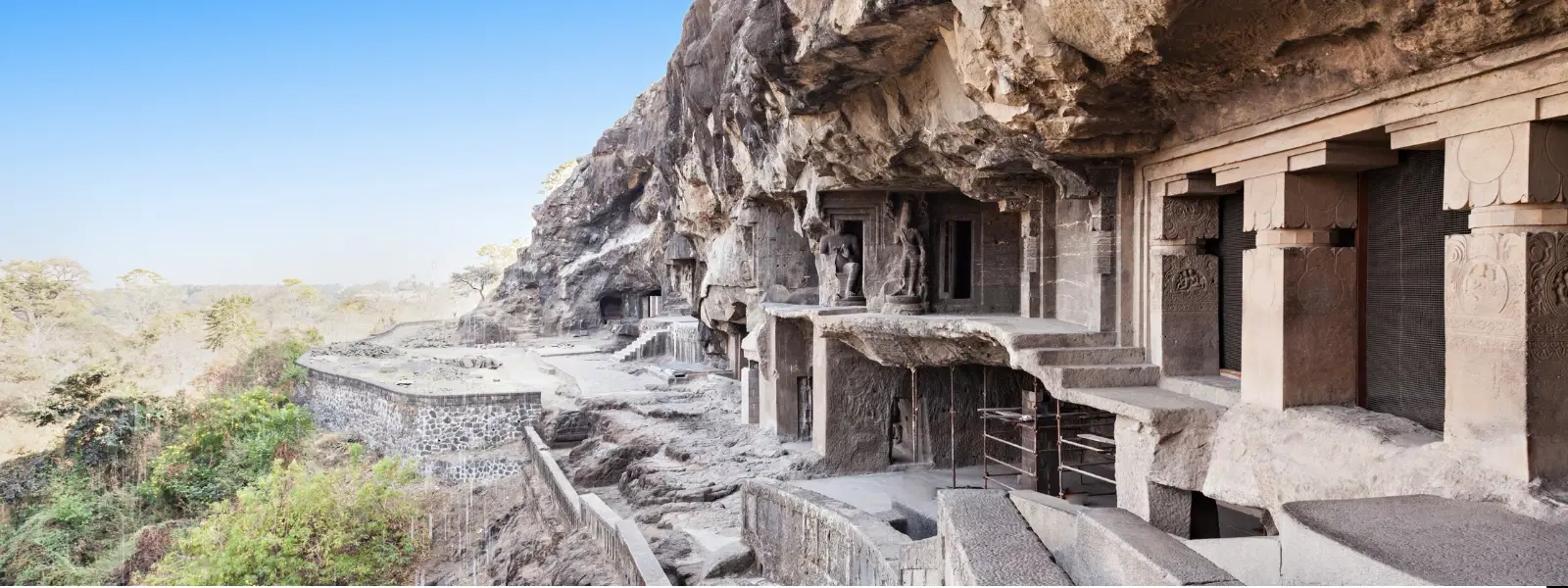
Hotels
•03 min read

The Moghalrajpuram Caves are a stunning fusion of art, spirituality, and history nestled in Vijayawada. Their ancient stone walls echo with the stories of bygone eras, offering visitors an immersive glimpse into the region's rich Buddhist heritage and exquisite rock-cut architecture. This blog explores seven fascinating facts about these historic cave temples, revealing why they have remained a treasured Buddhist site in Andhra Pradesh for centuries. By journey’s end, you'll gain valuable insights into the caves' origins, architectural marvels, religious significance, and practical visitor tips, making your next trip to this site an unforgettable experience.
The construction of the Moghalrajpuram Caves is intertwined with history. Believed to have taken shape during the era of the Vishnukundins dynasty and Eastern Chalukya period, these caves symbolize a remarkable period where artistic expression met religious devotion. Their creation also mirrors a blend of early Buddhist and Hindu influences, making them one of the earliest examples of fusion in rock-cut architecture within ancient caves in Andhra Pradesh.
The caves not only serve as a repository of art but also as a beacon of Buddhist culture in the region. They have historically played a crucial role in showcasing Buddhist heritage in Vijayawada. As a Buddhist archaeological site, the Moghalrajpuram Caves have contributed immensely to building the religious and cultural narrative of the area, enriching the legacy of Andhra Pradesh with stories of devotion and artistry.
The unique rock-cut architecture of these caves is a masterpiece of ancient engineering. Carved directly into solid rock, the structure demonstrates intricate workmanship, marked by detailed carvings and delicate sculptures. The method of cutting into the rock not only required impeccable precision but also reflects the sophisticated interplay between functionality and aesthetics, with early Buddhist and Hindu iconography woven delicately into the designs.
The Moghalrajpuram Caves are adorned with sculptures that communicate spiritual themes and mythological narratives. Among them, depictions of Nataraja, Ardhanarisvara, and Ganesh stand out for their intricate artistry and deep symbolic meanings. These figures are not merely ornamental; they tell tales of cosmic dance, duality of cosmic existence, and divine benevolence. The craftsmanship behind these sculptures provides insight into the artistic traditions of the time and the religious fervor that inspired them.

The caves have been a cornerstone in preserving Buddhist culture in the region. Serving as a spiritual retreat in ancient times, they continue to embody the ethos of Buddhist teachings in Vijayawada. The Moghalrajpuram Caves underlie the rich tapestry of Buddhist culture in Andhra Pradesh, acting as a tangible connection to the spiritual practices and rituals that have been passed down through generations.
Extensive research and excavations by the Archaeological Survey of India have unveiled several layers of history within these caves. New findings have implicated their role in a network of similar historic caves in the region, such as the famed Undavalli Caves. Each discovery adds depth to our understanding of the evolution of religious practices and architectural techniques that defined an era of creativity and devotion.
The Moghalrajpuram Caves are a must-see for travel enthusiasts. Beyond their historical and religious significance, the caves offer a unique window into the artistry of rock-cut architecture. Their location in Vijayawada means that a visit to the caves often dovetails with exploring other nearby tourist attractions, enriching your travel itinerary and deepening your connection with the cultural heritage of Andhra Pradesh.
Visiting the Moghalrajpuram Caves is both inspiring and convenient. The site is open daily from morning until evening, and entry fees are kept nominal to ensure accessibility. Located roughly 5 kilometers from the Vijayawada Temple, the caves are easily accessible. Visitors will appreciate simple tips such as wearing comfortable walking shoes due to the rocky terrain and planning for warmer parts of the day while exploring this enchanting heritage site.
Many secrets lie within the timeworn walls of the Moghalrajpuram Caves. Aside from the well-known sculptures, there are lesser-known carvings and historical anecdotes that evoke the mystique of ancient eras. The caves maintain a special connection to the Krishna River, which has nourished the region's culture and history, further deepening the site's allure as a historical treasure trove.
Did You Know?
The Moghalrajpuram Caves are one of the earliest examples of rock-cut architecture in Andhra Pradesh, blending Buddhist and Hindu influences to create a unique cultural landmark.

Moghalrajpuram is renowned for its ancient rock-cut caves, intricate sculptures, and historical significance as a Buddhist and Hindu cultural site.
The Moghalrajpuram Caves date back to the 7th century, linked to the Vishnukundins dynasty and reflective of early Buddhist and Hindu influences.
The caves are open daily from morning till evening, and ticket prices are very affordable for all visitors.
They are located approximately 5 kilometers from the Vijayawada Temple, making it a quick and easy trip.
Yes, the nearby Undavalli Caves also offer a fascinating peek into the region's heritage with their splendid rock-cut architecture and Buddhist significance.
The Moghalrajpuram Caves stand as a living testament to the cultural and historical wealth of Andhra Pradesh. From the intricate rock carvings that mesmerize art lovers to the deep spiritual connections that anchor Buddhist traditions, these caves invite you to step back in time and witness an enduring legacy. Whether you're driven by a passion for history or a thirst for travel, exploring these ancient cave temples is sure to be an enriching journey into the heart of Vijayawada's artistic and spiritual past.